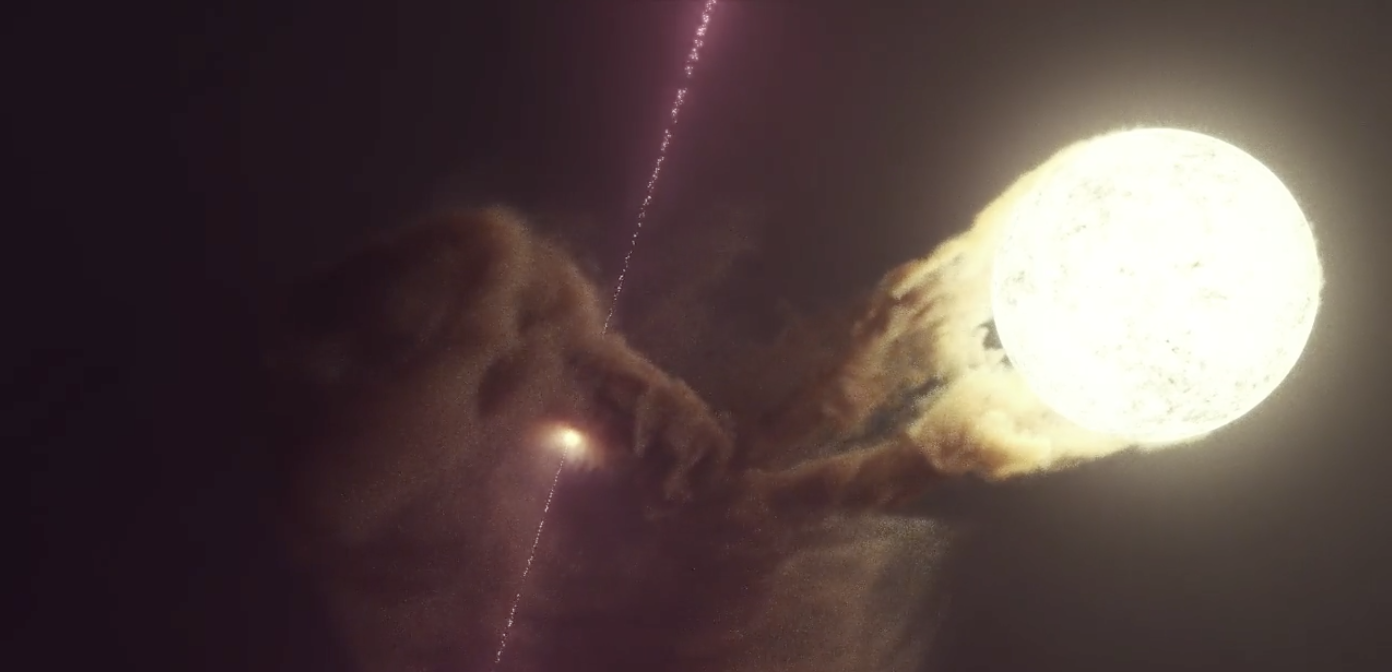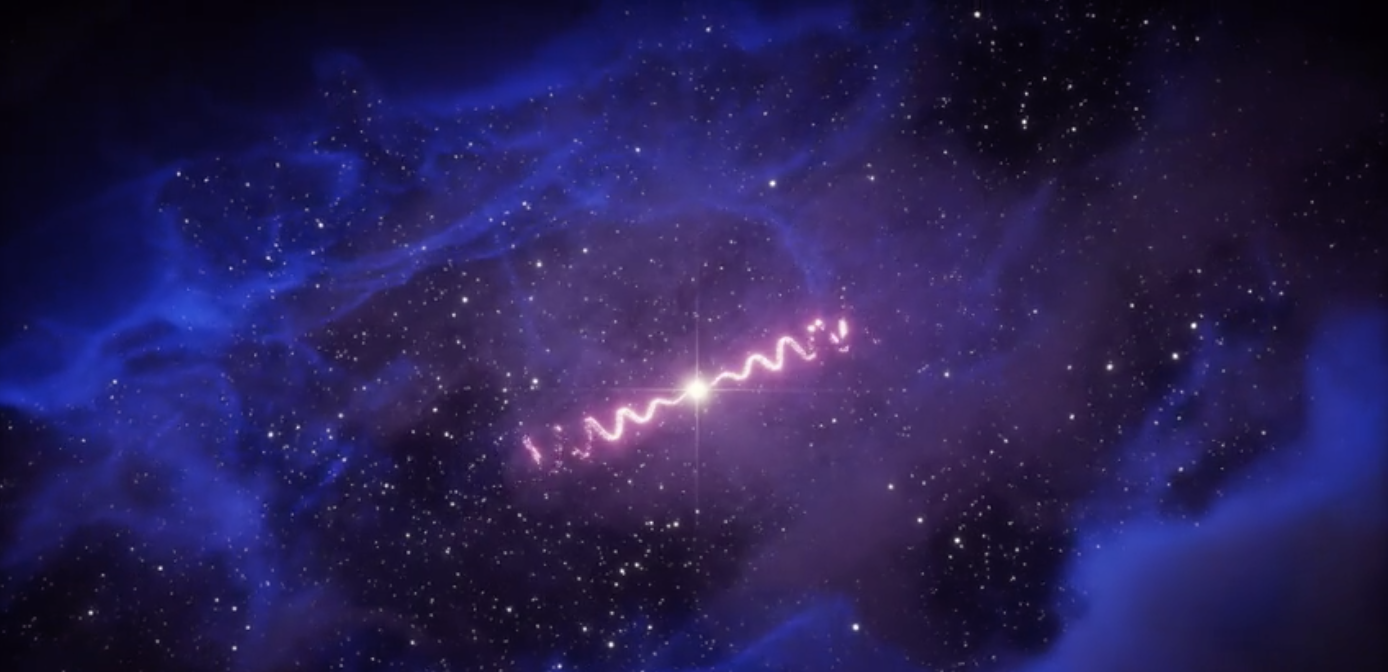There’s a cloudy patch of space inside our galaxy that unexpectedly produces gamma radiation at clockwork-like intervals. Scientists have now linked these periodic pulses to a “microquasar” — most likely a black hole — located a whopping 100 light-years away, in what is an extraordinary observation.
New research published today in Nature Astronomy describes an unusual long-distance relationship involving a radioactive gas cloud, called Fermi J1913+0515, and a microquasar, called SS 433, both of which reside inside the Milky Way galaxy.
Data gathered over the past 10 years suggests the objects are inextricably connected and working in sync, despite the enormous distance that separates them. The authors of the new paper, led by Jian Li from Deutsches Elektronen-Synchrotron and Diego Torres from the Institute of Space Sciences, aren’t entirely sure what’s going on or how the microquasar is causing the gas cloud’s gamma-ray heartbeat, which pulses once every 162 days.
Located 15,000 light-years from Earth, microquasar SS 433 is one of the most fascinating places in the galaxy. It’s a binary system that consists of a compact object, most likely a black hole but possibly a neutron star, and an overweight star. The presumed black hole weighs in at between 10 and 20 solar masses (in which 1 solar mass is equal to the bulk of our Sun), while the star has a mass of 30 solar masses. Stuck together, the objects spin around each other once every 13 days. SS 433 is a pint-sized version of a normal quasar, a type of cosmic object that encompasses vastly heavier black holes packed with millions of solar masses.

This celestial union generates an array of detectable ephemera in the form of gamma rays, X-rays, radio waves, and hydrogen gas. The big star is shedding much of its material onto the black hole, resulting in an intense accumulation of gases.
“This material accumulates in an accretion disc before falling into the black hole, like water in the whirl above the drain of a bathtub,” explained Li in a press release. “However, a part of that matter does not fall down the drain but shoots out at high speed in two narrow jets in opposite directions above and below the rotating accretion disk.”
These jets generate X-rays and gamma rays owing to the combined forces of high-speed particles and ultra-strong magnetic fields resident in the binary system. That said, the accretion disc around the black hole isn’t resting perfectly flat along the orbital plane of the two objects.
“It precesses, or sways, like a spinning top that has been set up slanted on a table,” said Torres in the DESY release. “As a consequence, the two jets spiral into the surrounding space, rather than just forming a straight line.”

This precession sways with a period lasting for 162.25 days. And as the new research shows, Fermi J1913+0515 emits a gamma-ray signal in perfect sync with the microquasar, even though it’s 100 light-years away. Aside from this, there’s nothing particularly special about this cloudy patch of space, but the data, collected using NASA’s Fermi gamma-ray space telescope, suggests the gamma-ray heartbeat is being powered by microquasar SS 433.
Making matters even weirder, the jets from the microquasar, even with the precession, do not cross the path of Fermi J1913+0515, as Li explained in an email.
“This is the first time we see this observation result, and is unexpected from previously published theoretical models,” he said.
Li and his colleagues aren’t entirely sure how the microquasar is powering the remote gas cloud, but they think protons from the equatorial outflow of SS 433 are interacting with the cloud, leading to the gamma-ray emission and observed heartbeat-like periodicity.
“To maintain the coherence of the heartbeat, a magnetic tube may connect the gas cloud and SS 433,” said Li in his email.
[referenced id=”1225435″ url=”https://gizmodo.com.au/2020/06/a-black-hole-collided-with-something-that-shouldnt-exist/” thumb=”https://gizmodo.com.au/wp-content/uploads/2020/06/24/yorf8xbdrp9jyyzmbprn-300×168.jpg” title=”A Black Hole Collided With Something That Shouldn’t Exist” excerpt=”Astronomers are puzzling over observations that show a black hole smashing into a mystery object of unusual size.”]
More observations of the objects and a new theoretical explanation to explain this unexpected finding and the hypothesised “magnetic tube” would help move this work forward. One thing’s for certain, however: This patch of space, located in the constellation Aquila (or Eagle), is now among the most fascinating spots in the Milky Way.
